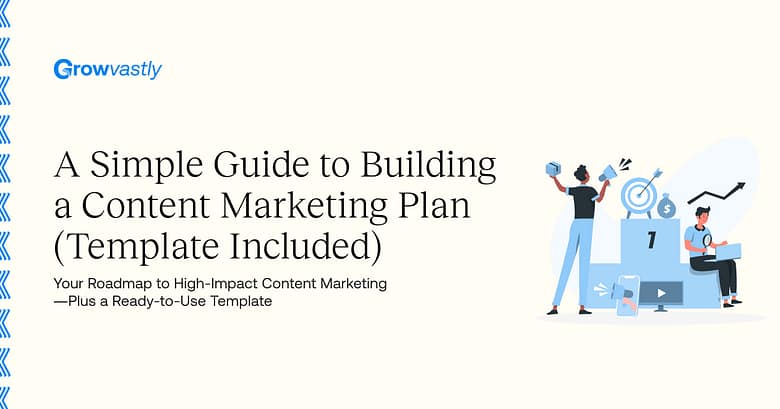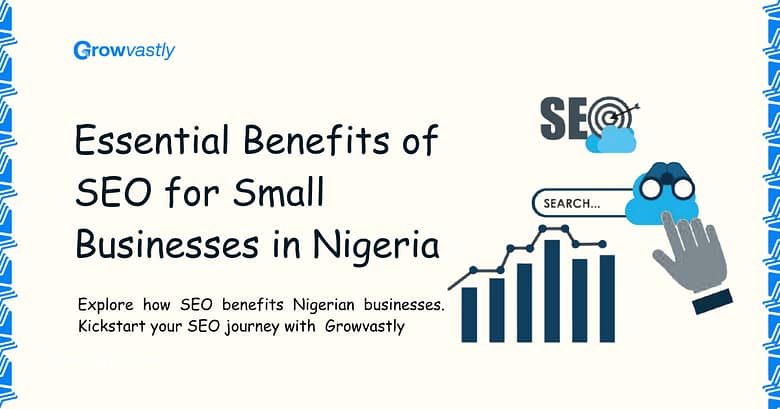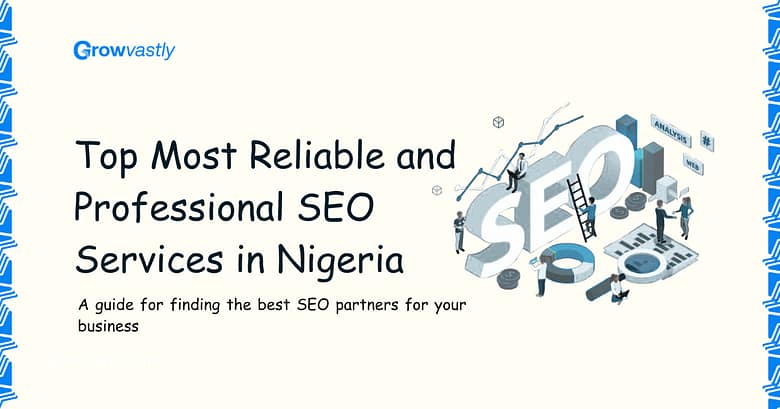In today’s digital landscape, content is king. However, even the best content can fall flat without a clear content marketing plan. A well-structured content marketing strategy framework ensures your efforts align with your business goals, resonate withs your audience, and deliver measurable results. Yet, many businesses struggle with inconsistent content, poor ROI, and a lack of direction.
This guide will walk you through creating a winning content marketing plan, complete with a free content marketing plan template to help you start immediately. Whether you’re a small business or large enterprise, this content marketing strategy framework will equip you with actionable tools.
What Is a Content Marketing Plan?
A content marketing plan is a documented strategy that outlines how your business will create, distribute, and measure content to achieve specific goals. Unlike random content creation, a plan ensures your efforts are purposeful, consistent, and aligned with your overall business objectives.
Think of it as a roadmap that guides your content strategy, helping you focus on what matters most: delivering value to your audience while driving business growth. Without a structured plan, businesses often struggle with inconsistent messaging, wasted resources, and missed opportunities to engage their target audience effectively.
Why You Need a Content Marketing Plan
A documented content marketing plan offers numerous benefits that can significantly impact your business success. First, it aligns content with business goals, ensuring every piece of content supports objectives like increasing brand awareness, generating leads, or driving sales. Without this alignment, content efforts may feel disjointed and ineffective.
Second, it improves team collaboration by providing clarity and direction, making it easier for writers, designers, and marketers to work together efficiently. Additionally, a well-defined plan enhances ROI. Research shows that marketers who document their content marketing strategy are 674% more likely to reach their goals.
Without a plan, businesses risk wasting time, resources, and opportunities. A structured content marketing strategy framework ensures your efforts are focused, measurable, and impactful.
Key Elements of a Successful Content Marketing Plan
1. Clear Goals and Objectives
Your content marketing efforts must align with overarching business goals. Instead of vague ambitions like “increase brand awareness,” use the SMART framework:
- Specific: “Grow organic traffic from 50K to 75K monthly visitors.”
- Measurable: Track progress via Google Analytics.
- Achievable: Ensure goals are realistic given your resources.
- Relevant: Tie content KPIs to business outcomes (e.g., leads, sales).
- Time-bound: “Achieve this within 12 months.”
- Pro Tip: Track objectives using our content marketing planning template.
2. Deep Audience Understanding
While having clear goals and objectives is critical to a successful content marketing plan, it’s vital to understand your target audience. Generic content fails, so you should develop detailed buyer personas by analyzing:
- Demographics (age, job title, location)
- Psychographics (interests, challenges, values)
- Content consumption habits (preferred formats, platforms)
- Tools like Google Analytics, surveys, and social listening can uncover these insights.
3. Content Types and Formats
Different audiences engage with different formats. For instance, recent studies and data show that Gen Z audiences prefer more entertaining content found on social media. That said, match content types to your goals:
- Blogs/SEO content for organic traffic growth
- Videos/webinars for high engagement
- Case studies/whitepapers for B2B lead generation
- Infographics for shareable social media content
4. Content Calendar and Workflow
Consistency is key, which is why you need a specific and predictable workflow for your content team. Typically, you should have a calendar for creating content across social media, blogs, emails, and more. A structured editorial calendar should include:
- Publishing dates
- Responsible team members
- Content themes/campaigns
- Seasonal/trend-based opportunities, etc.
5. Strategic Distribution Channels
Without proper distribution, the best content will flop. Prioritize channels where your audience is most active. In many cases, you may have to repurpose the same content into different formats for effective distribution.
- SEO and organic search for long-term traffic
- Social media (LinkedIn for B2B, Instagram/TikTok for B2C)
- Email marketing for nurturing leads
- Paid ads to amplify high-performing pieces
6. Performance Tracking and Optimization
Executing a content marketing plan without measuring the progress is like flying blind. You are most likely to miss out on opportunities or even threats to your campaign. It’s also essential to determine the metrics that are most vital for your business rather than tracking every metric you can find on your tool. Some popular metrics are:
- Traffic metrics (sessions, pageviews)
- Engagement (time on page, social shares)
- Conversions (lead form submissions, sales)
- SEO performance (keyword rankings, backlinks, position tracking)
- Use Google Analytics, SEMrush, or HubSpot to track and refine.
How to Create a Content Marketing Plan: Step-by-Step Guide
Creating a content marketing plan may seem daunting, but breaking it down into actionable steps makes it manageable. Here’s a detailed guide to help you build a plan that works:
Step 1: Set Clear Goals
Start by defining what you want to achieve with your content. Your goals should align with your overall business objectives and follow the SMART framework. For example:
- Increase website traffic by 30% within six months.
- Generate 500 new leads per quarter through gated content.
- Improve brand awareness by growing social media followers by 20%.
Setting clear goals provides direction and helps you measure success. Companies like Growvastly help businesses with content marketing planning and execution.
Step 2: Understand Your Audience
Your content won’t resonate if it doesn’t address your audience’s needs. Conduct thorough research to create detailed buyer personas. Include:
- Demographics (age, gender, location).
- Pain points and challenges.
- Content preferences (e.g., blogs, videos, infographics).
- Buying behaviors and decision-making processes.
- Tools like surveys, interviews, and analytics can help you gather this data.
Step 3: Conduct a Content Audit
Before creating new content, it’s vital to evaluate your existing content and SEO systems to identify gaps and opportunities. This may not apply if you’re just kickstarting a content marketing campaign.
For a thorough audit of your current content system, ask the following questions:
- Which pieces are performing well?
- Which topics are missing or underperforming?
- How can you repurpose or update old content?
A content audit ensures you build on what’s already working and avoid duplicating efforts.
Step 4: Choose Content Formats
Different audiences prefer different types of content. Based on your research, select formats that align with your audience’s preferences. For example:
- Blog posts for in-depth information.
- Videos for visual storytelling.
- Infographics for data-driven insights.
- Podcasts for on-the-go audiences.
Diversifying your content formats keeps your strategy fresh and engaging.
Step 5: Develop a Content Calendar
A content calendar is the backbone of your content marketing plan. It helps you plan, organize, and schedule content in advance and it also guarantees consistency. A content calendar may include:
- Publication dates.
- Content topics and formats.
- Responsible team members.
- Distribution channels.
- Tools like Trello, Asana, or Google Sheets can help you create and manage your calendar.
Step 6: Promote Your Content
Creating great content is the first step, but you need to promote it effectively. Use a mix of channels to reach your audience, such as:
- Optimizing your content for search engines to drive organic traffic.
- Sharing content on social media platforms where your audience is active.
- Sending newsletters to your subscribers with links to your latest content.
- Using paid ads to amplify reach for high-priority content.
Promoting your content ensures your content gets seen by the right people. Moreover, it gives existing users the idea that you are good at your game.
Step 7: Measure and Optimize
You should also track the performance of your content using key metrics like. At Growvastly, we use popular tools to monitor our clients’ performance, such as Google Analytics, Semrush, Screaming Frog, and Microsoft Clarity. Metrics you may monitor include:
- Website traffic.
- Engagement rates (likes, shares, comments).
- Conversion rates (leads, sales).
- ROI (return on investment).
Free Content Marketing Plan Template
To simplify the process, we’ve created a free downloadable content marketing plan template you can follow. Please note that the template doesn’t show you how to create the content plan, which has been discussed in this article. Instead, it is a relatable way to present your plan for quicker execution.
This resource includes all elements of a content marketing strategy framework:
- Objectives tracker
- Audience persona builders
- Content calendar views
- Performance analytics
- Content marketing planner sheets
This is some example text following the download call to action block.
Common Mistakes to Avoid in Content Marketing Planning
- Lack of Clear Goals: Without defined objectives, content efforts lack direction. Always set measurable goals to track success.
- Ignoring Audience Research: Failing to understand your audience leads to irrelevant content. Invest time in developing detailed buyer personas.
- Inconsistent Publishing: Irregular posting harms engagement and SEO. A content calendar ensures consistency.
- Failing to Measure Performance: Without tracking KPIs, you can’t optimize. Use analytics tools to refine your strategy based on data.
Avoid these pitfalls by following this guide and using the free content marketing plan template.
Frequently Asked Questions
1. What is the difference between a content strategy and a content plan?
A content strategy defines the main idea behind your content, while a content plan outlines the how and when, detailing execution, scheduling, and distribution.
2. How often should I update my content marketing plan?
Review and adjust your plan quarterly to align with changing business goals, audience trends, and performance insights. At Growvastly, we measure over four quarters: Q1 to Q4.
3. What tools can I use to create a content marketing plan?
Tools like HubSpot, Semrush, Trello, and Google Analytics help plan, schedule, and track content and performance.
4. What’s the difference between a content marketing planner and template?
A planner schedules tasks and workflows, while a content marketing template provides the strategic framework and structure.
5. How do I adapt this content marketing strategy framework for small teams?
Start with our simplified content marketing planning template and focus on 2-3 high-impact content types before scaling up.
6. Where can I find industry-specific content marketing templates?
Our content marketing plan template applies to any industry. After doing your research, you can fill out the template regardless of the industry.
7. Do you offer content marketing for European markets?
Yes! Growvastly offers content marketing to industries across the globe. We have a long list of happy clients locally and internationally, including but not limited to the US, Australia, Sweden, and Singapore.
Conclusion
A well-crafted content marketing plan is essential for achieving business goals and maximizing ROI. By following this guide and using the free content marketing plan template, you can develop a strategy that delivers real results.
Don’t wait; start building your content marketing plan today and take your business to the next level! Download your free content marketing plan template now to implement this content marketing strategy framework.





